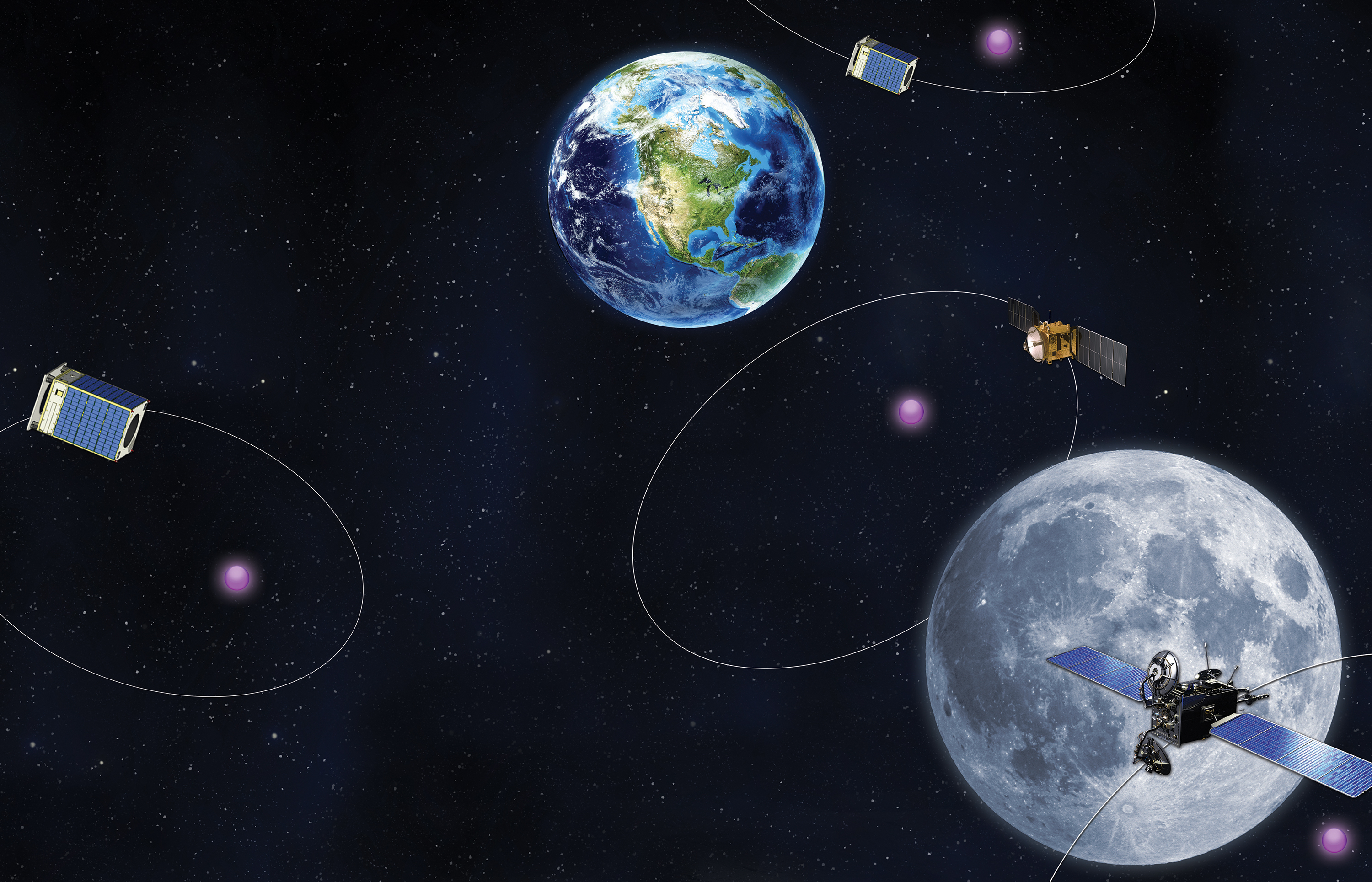News
Johns Hopkins APL Shapes a Vision for Promoting Security in Cislunar Space
The Johns Hopkins Applied Physics Laboratory (APL) in Laurel, Maryland, has released a Cislunar Security National Technical Vision with recommendations for policy and technology development to enable safety and stability in the cislunar region.
Cislunar space comprises the region between Earth’s geosynchronous orbit — approximately 22,000 miles (35,000 kilometers) from Earth’s surface — and the Moon, as well as the Earth-Moon Lagrange points. The region has recently attracted significant interest from military, civil space and industry organizations. They see cislunar space as a key location for military asset placement, scientific exploration, and even resource mining and manufacturing.
Over the next decade, experts expect more than 100 lunar missions to launch worldwide. That is nearly twice as many as were attempted in the first decade of the Space Race. With the anticipated increase in activity in cislunar space and on the lunar surface, new concerns about security in the region have arisen.
Forging a Technical Vision
Although heavy use of cislunar space is not expected for years, Steve Parr, a program manager in APL’s Space Exploration Sector and section author and co-editor of the technical vision, said planning is critical — especially since development of space technology and policy is a long, complex process.
“While there are many more resources currently applied to the low-Earth and geosynchronous orbital regimes, there was a time when only a few satellites were there as well,” Parr said. “While APL is not the organization responsible for cislunar security at the national level, we have significant expertise in lunar science, defense strategy and building space systems to help the United States address this significant challenge.”
To create the technical vision, Parr and colleagues synthesized findings from discussions at the first two Cislunar Security conferences, hosted by APL in 2020 and 2021, and attended by more than 700 experts and 150 organizations in the field. Input was gathered from internal conversations and meetings with various government and community stakeholders. They identified three broad needs for cislunar security, which are laid out in the technical vision. The first is a need for internationally agreed-upon norms of behavior for the cislunar regime and the lunar surface; the second is a need for enhanced space situational awareness to identify when an entity violates those norms; and finally, there must be an ability to address norm violations.
In the 75-page report, APL experts describe needs and potential solutions for policy and enhanced technological capabilities, including space situational awareness; position, navigation and timing; communications; and reconstitution, or the ability to restore capabilities to full operational readiness after a conflict. The report recommends the development of technical capabilities to ensure safety, stability and transparency in the region.
“Our goal is to make a critical contribution in pushing forward the national dialogue around the policy and technology development for cislunar security,” said Parr.
The report will be released to attendees at APL’s third annual Cislunar Security Conference on Nov. 15, 2022, and available online.
Experts Gather to Continue Progress on Cislunar Security Considerations
The Cislunar Security Conference started in 2020 and has quickly grown to the largest conference in the United States dedicated to cislunar security. The conference is an annual event that provides a forum for hundreds of experts around the country to discuss needs and potential solutions to secure the cislunar region and the lunar surface in the future.
“We need to keep focus on the security concerns in the cislunar domain,” explained Patrick Binning, APL’s National Security Space mission area executive. “As our nation, our commercial sector and our adversaries prioritize the value of moving between Earth and the Moon in cislunar space, it will become more congested, and possibly contested. This increases the need for space domain awareness and possibly the protection of critical assets in that domain.”
Approximately 400 experts will attend this year’s event in person and virtually. NASA Deputy Administrator Pam Melroy, U.S. Space Command Joint Task Force – Space Defense Commander Brig. Gen. Dennis Bythewood, and White House Office of Science and Technology Policy Assistant Director for Space Security Matthew Daniels will give keynote addresses at the event.
Home to the world’s largest community of lunar experts in a single location, APL is a leader in cislunar security. The Laboratory’s third annual Cislunar Security Conference will take place from Nov. 15 to 17. The conference is a forum on the technology, policy, doctrine and strategy implications of ensuring free access to transit and use of the Earth‑Moon system beyond geosynchronous orbit. The conference aims to encourage national‑level technical discourse related to domain awareness, policy and strategy, communications and infrastructure, trajectory design, threats, position, navigation and timing for cislunar security.
